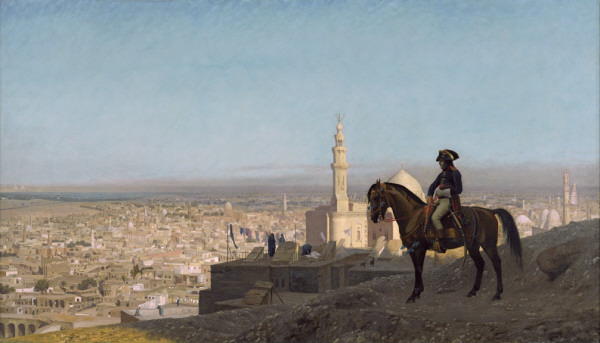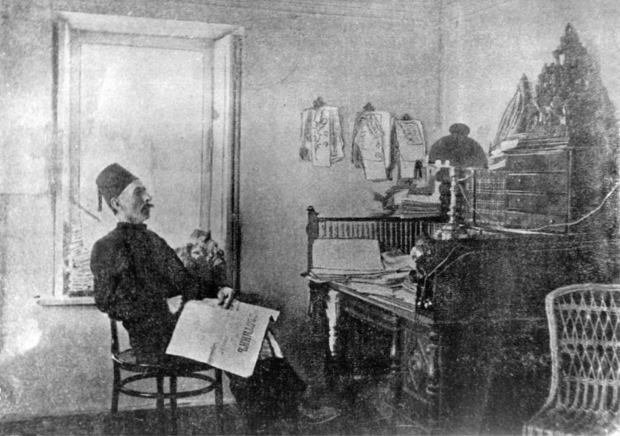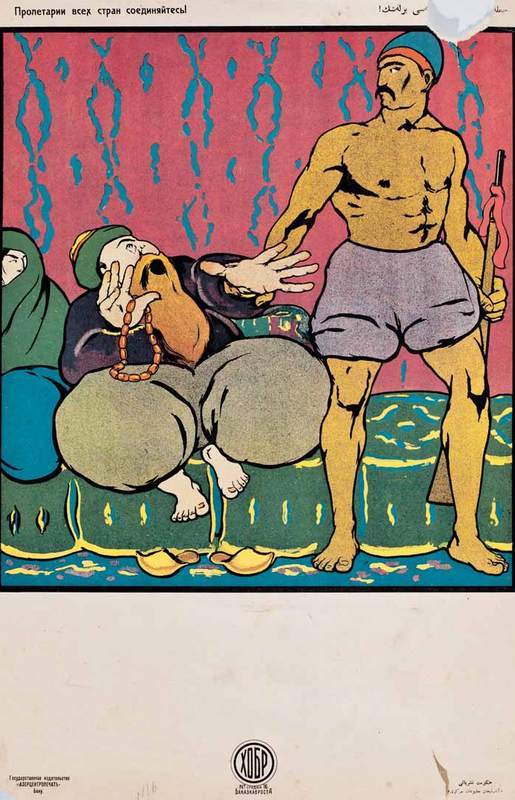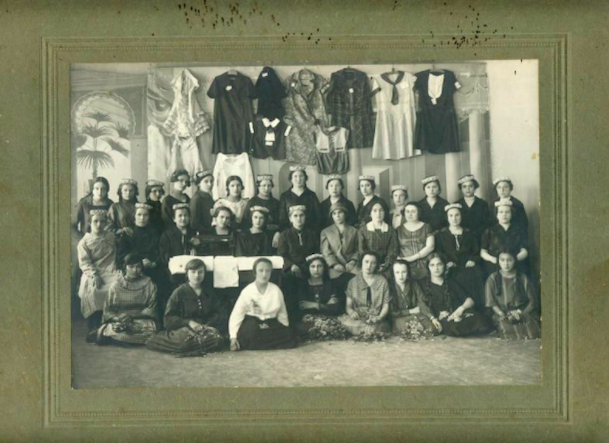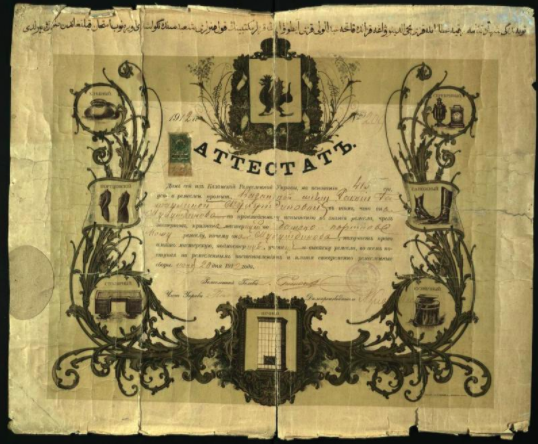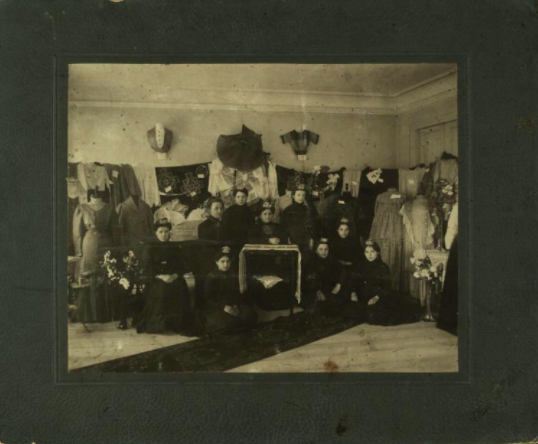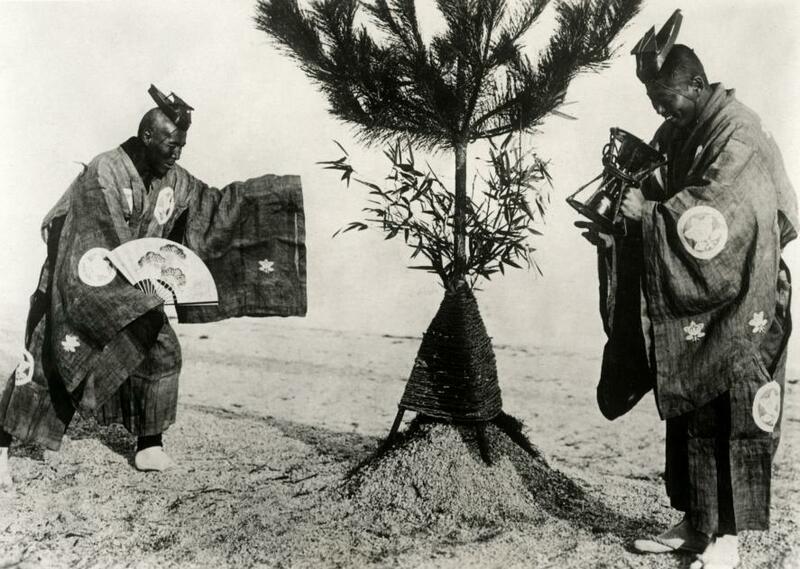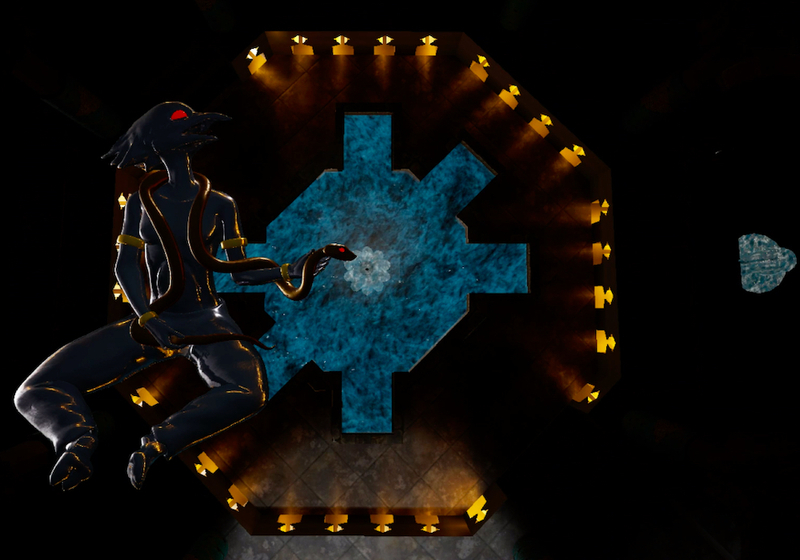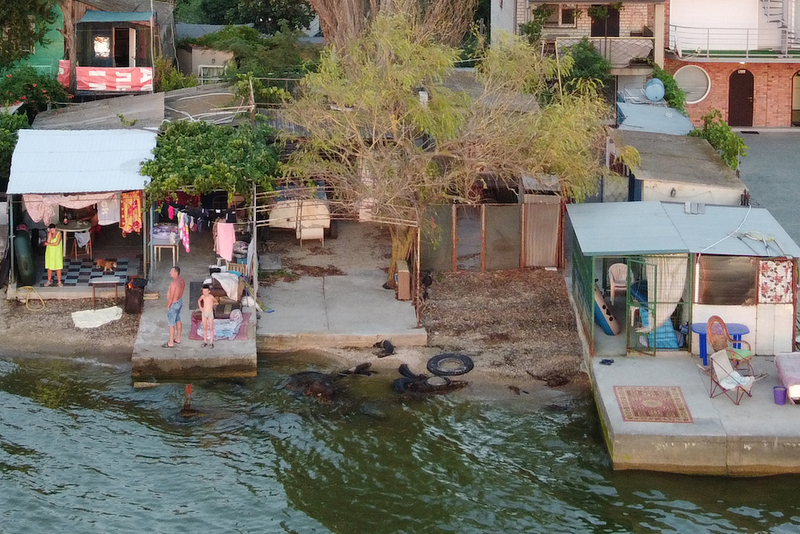Researcher and activist Artiom Slota, one of the winners of our open call, presents an essay on the large-scale reform movement that emerged in the late 19th century within Muslim societies around the world—from the Ottoman Empire to the British Raj. In his text, Artiom discusses the history, main ideas, and faces of Muslim modernism, paying special attention to its relevance for modern postcolonial theory and gender studies in the context of the history of Central Asian states.
ISLAM AND MODERNITY
When for any reason the issues of Western and Islamic values are raised in public discussions, they are usually positioned as incompatible. The conflict already underlies their very definitions, when one region or, as they say, “civilization,” is viewed through geographic location, and the other—through religious affiliation. Thus, a certain monolithic West is perceived as a secular world, the heir to the Enlightenment, whose inhabitants, following Kant, “have the courage to use their own minds,” while the Muslim world, stretching from Morocco to Indonesia, is presented as having been denied any belonging to modernity. The heterogeneity of this world, the complexity of assessing the level of religiosity, and the ambiguity of the term “secularity” usually remains without being given the attention it is due. The essentialist attitude towards “the Muslim East,” which as a simplification is not entirely acceptable but still present in Western and Russian media, continues to be reproduced in Western and Russian academies. In Russian and Western universities, the history of Islamic literature, art, and philosophy is commonly taught and researched mainly within the framework of the Middle Ages. Modern history belongs to Europe, while the modern Muslim world, for the sake of the current state of affairs that Edward Said used to write about, is mainly studied through fundamentalism, and radical and political Islam. This dichotomy is rarely questioned, not only in the West, but also in Muslim societies themselves. Nevertheless, the relationship between Islam and European modernity has a history that is directly related to another key phenomenon of modern history—colonialism.
Bottom: Jean-Leon Gerome, Bonaparte in Cairo. 1867–1868
Léon Cogniet, The 1798 Egyptian Expedition Under the Command of Bonaparte. 1835
Hearst Castle Museum, Louvre / Wikimedia Commons
During the 19th century, a significant area of the Muslim world was occupied by European empires in the process of conquests that started with Napoleon's invasion of Egypt and ended with the annexation of Central Asia to the Russian Empire. Such a triumph of the Western world could not but provoke a response from representatives of the Muslim intellectual elite who, realizing the military and scientific superiority of European countries, came up with projects of Islamic reformation. Similar ideas had been articulated in the history of Muslim thought before, but by the end of the 19th century they had formed the basis of a new intellectual movement—Muslim modernism, which spread to the territories of the Ottoman Empire provinces, British India, Central Asia, and the Volga region. The desire to free themselves from the imperial conquerors and to overcome cultural and economic decline for the further prosperity of Muslim world stimulated intellectuals and legal scholars to initiate reforms. It was clear to them that various achievements of European civilization, both in science and in the political system, had to be borrowed, but at the same time they realized that simple copying was impossible—any innovation had to be legitimized within the Muslim tradition.
The use of the term “modernism” by the researchers deserves special attention, since this concept never actually appeared in the texts and speeches of the reformers themselves. In this context, the term can be interpreted in two ways. On the one hand, it can refer to the concept of modernity, defined as a historical period after the French Revolution and characterized by the formation of a new type of state. Thus, it is generally accepted that modernitymodernity Гумбрехт Х. У. Современный, Современность (Modern, Modernität, Moderne) // Словарь основных исторических понятий. Т. 1. М: Новое литературное обозрение, 2016. С. 278. came to the Muslim world along with Napoleon's campaign in Egypt in 1798. The notion of modernism can also be interpreted as a future-oriented understanding of modernity as a concept that is opposed to tradition. Thus, the term “Muslim modernism” sounds like an oxymoron and does not fully reflect the essence of the reforms, which were largely focused precisely on the revival of the tradition in its original form.
Islah, a concept important for understanding of the relationship between Islam and modernity, is usually translated as “reform,” however in Arabic, the word itself rather stands for “improvement.” This term is used to describe the reform movements in the Muslim world from the 18th century up to now. Such projects are based on the idea that during the historical development of Islam, misinterpretations distorted the original meanings of Quran and Sunnah texts, introducing harmful practices into the daily life of the Muslims. The reforms aimed to restore the strength and prosperity of Muslim societies. A selective approach to borrowings from progressing Western science, as well as political and public life, was used to prevent the replacement of Islamic culture by that of the West. Thus, the reformers mainly dreamt of the existence of Muslim culture in modernity on an equal footing with European ones. But this dream was not destined to come true.
MUSLIM MODERNISM
Initially, the need for reforms was voiced by intellectuals of completely different political orientations of the Arabic-speaking world. Throughout the region, pro-independence local movements were emerging; publicists, thinkers, and religious figures publishing their texts in newspapers and developing programs for reforming public and political life, where special attention was paid to the scientific and technological backwardness of Muslim societies. Some of them managed to get the support of political elites and partly implement their reforms.
One of the most famous thinkers who tried to present an ideological alternative to colonial rule was Jamāl al-Dīn al-Afghānī (1893-1897). Teaching theology, he could travel to different regions of the Islamic world and urge his students to actively resist European colonialism and the ideological hegemony of Europe. Having settled in Cairo, the reformer was able to spread his ideas among the local intellectual elite, some of whom later took important posts in the government and contributed to a further spread of his thoughts among contemporaries. Another reformer and educator, an Ottoman and Tunisian statesman and the author of the Tunisian constitution, Hayreddin Pasha (1819-1890), wrote texts where he appealed to the freedoms that led to the political and economic prosperity of Europe. One of the founders of the Egyptian People's Party, Ahmad Lutfi al-Sayyid (1872-1963), being al-Afghānī’s follower, also focused his political thought not on Islam, but on freedom as a necessary condition for life, the natural state of individual’s and people’s inalienable rightsrightsAlbert Hourani, Arabic Thought in the Liberal Age, 1798–1939, (Cambridge: Cambridge University Press, 1983), 173.. It is also interesting to note that he did not share his predecessors’ skepticism about the readiness of Muslims to directly participate in political life and exercise their suffrage.
Right: Ahmed Lutfi el-Sayed
At the same time, there were various points of view on the nature of the reforms, which can be described as representing two opposite approaches: the idea of freeing Islam of harmful innovations, which refers to “the Golden Age” of Islam, and secularism, which addressed the European experience. It should be specified that the views of representatives of various kinds of reformist streams were always somewhere between these two extremes. One the earliest reformist movements in the history of Islam was the Salafi movement, which promoted the idea of the return to the experience of “pious forefathers”—especially the first three generations of Muslims, who were believed to have lived in Islam’s true Golden Age. Already in the 18th century, these ideas formed the basis of Wahhabism, which later influenced the formation of not only individual states, but also of a number of terrorist movements, and was mainly described as fundamentalism within the Western academy . Without going deep into the analysis of the reasons for such a development of events, we will only note that an appeal to the “great past” has not always been exclusively reactionary in the intellectual history of Islam. For example, if to turn directly to the texts of the founder of the movement al-Wahhab (1703-1792), one can find rather progressive initiatives adopted by Muslim modernists. The reformer called for a return to the practice of direct interpretation (ijtihad) of the Quran and Sunnah through the contextual analysis of their contentcontentNatana J. DeLong-Bas, Wahhabi Islam: From Revival and Reform to Global Jihad (New York: Oxford University Press, 2008).. This attempt to reform Muslim law was interpreted by Muslim modernists as a liberating and enlightening step as early as the 19th century.
For the Muslim reform movement, even in the case of its orientation towards the European experience, it was necessary to embed the proposed reforms into the existing legal and religious tradition. In most cases, borrowing was positioned not as a copying of Western European achievements, but as a return to the original Islamic path. One of the key problems the reformers faced was the scientific superiority of the European empires, which was perceived as the main reason for their economic and military success. Many representatives of Islamic reformism criticized the opposition of faith and reason in Islam. Sharing the ideas of falsafa, that is, medieval Arabic-speaking followers of Aristotle, and emphasizing the superiority of rational philosophy over blind faith, they, however, believed that the theorizing of theologians and philosophers led to the distortion of Revelation and unbelief, and often positioned philosophy as the lot of the chosen. The reform of Islam, therefore, was perceived as an opportunity to overcome the problem of the balance of faith and reason and as a way to affirm the compatibility of Islam and scientific knowledgeknowledgeMarietta Stepanyants, Muslim concepts in philosophy and politics of the XIX-XX centuries. (Moscow: Nauka, 1982), 72..
JADIDISM
The colonial ambitions of the Russian Empire, alongside of those of other European states, also spread to territories inhabited by a predominantly Muslim population and led to a backlash in local intellectual circles at the turn of the 19th and 20th centuries. Similar to the French civilizing mission (mission civilisatrice), St. Petersburg's policy towards Central Asia and the Caucasus was based on a perception of the local population as barbaric and fanatically religious. In response, an intellectual and cultural phenomenon emerged on the outskirts of the empire which would later be called Jadidism.
The name of this movement comes from the Arabic word jaded, which means “new,” and was given by historians due to the popularization of a new educational method that differed from the traditionally religious one. At the same time, the reformers themselves preferred to describe themselves as progressives, intellectuals, or simply the youth. The ideas of the movement’s supporters became widespread in the Crimea, the Caucasus, the Volga region, and Central Asia. The Crimean Tatar educator İsmail Gaspıralı (1851-1914), usually called Gasprinski according to the European standard, is considered to be the founder of Jadidism. He succeeded in persuading the imperial authorities to publish the first Turkic-language newspaper in the empire with its progressive influence later spreading far beyond Crimea.
Bottom: İsmail Gaspıralı at work in Bakhchisarai. İsmail Gaspıralı next to Azerbaijani public figures Hasan bey Zardabi and Alimardan Alakbar oglu Topchubashov
Memorial Museum of Ismail Gasprinsky / Bakhchisarai Historical, Cultural, and Archaeological Museum-Reserve
Probably the key difference between the Jadids and the Arabic-speaking, like-minded people who had to resist not only the European but also the Ottoman empire and therefore cultivated their own special, not just Muslim, but rather Arab-Muslim identity, lies in a freer understanding of Islam. At the turn of the 19th and 20th centuries, the Muslims of the Russian Empire defended their identity within the Orthodox Empire and represented a rather diverse geographic, ethnic, and linguistic community, thus Jadidism as a movement grew into a whole spectrum of theological, legal, and political ideasideasAdeeb Khalid, The Politics of Muslim Cultural Reform: Jadidism in Central Asia, (Berkeley, Los Angeles, and London: University of California Press, 1998), 92.. It is noteworthy, for example, that many Jadids were involved with Sufi brotherhoods, while the Arabic-speaking modernists were mostly sharply critical of Sufism.
Nevertheless, the main most widespread directions of Jadidist thought can be singled out. First of all, this is, of course, the reform of the traditional education given in religious schools. The Jadids advocated both a change in the system of direct religious education through a familiarization with sacred text translations and their discussion instead of memorization, and the introduction of a secular educational program in schools at mosques so that it would be accessible to the general population and not only to urban residents. The reform advocates not only established educational institutions in villages, but also in every possible way contributed to the development of the printing and book trade. Bookstores opened by the Jadids in the cities of Central Asia sold books published in Istanbul, Cairo, Beirut and, of course, in the largest Muslim centers of the Russian EmpireRussian EmpireIbid, 109.. Thus, Jadidism went beyond the exclusively Turkic-speaking world and developed under the influence of the ideas of reformers from the Ottoman Empire, British India, and Iran, thanks to whom some translations of European philosophers became available to the Turkic-speaking population. In his works, one of the main researchers of Jadidism, Adeeb Khalid, repeatedly draws attention to a fairly widespread gender agenda among reformers, many of whom defended girls’ right to education and the expansion of the role of women in public and religious lifelifeIbid, 224.
.
Muslim modernism in general and Jadidism in particular developed against the background of the social, economic, and cultural changes that came with European colonialism. Thanks to the development of trade between the center and the outskirts, groups of relatively wealthy local residents arose, among whom progressive reform ideas were spreadspreadIbid, 96.. The development of the publishing business and the emergence of various periodicals contributed to the circulation of ideas not only from the metropolis to the colonies, but also within them on a horizontal level. Thus, the 19th century in the Arabic-speaking culture was characterized by a phenomenon called nahda, usually translated as the “Arab Renaissance.” This interpretation could be considered Eurocentric, however in Arabic the Renaissance is called the “European nahda,” so in this case the analogy works both ways.
Memorial Museum of Ismail Gasprinski / Bakhchisarai Historical, Cultural, and Archaeological Museum-Reserve
The rise of culture, as it has already been mentioned, was traditionally associated with Napoleon’s invasion of Egypt, which led to an growing European influence in the Middle East. Influenced by European literature, new genres emerged in the Arabic-speaking tradition and periodicals appeared in Arabic. Similar processes also evolved in the culture of the Turkic-speaking world that came under the influence of the Russian Empire: in local literature, for example, such a genre as the novel was formed, translations of European and Russian writers were made, and from the Volga region to Central Asia there was a surge of interest in European theater. In 1912, Robinson Crusoe was translated, and, for example, the Uzbek writer Hamza Hakimzade Niyazi (1889-1929) was considered the author of a new generation of writersa new generation of writersIbid, 127.. The Jadids contributed not only to the reform of religion, they also formed a new secular culture. Of course, colonial authorities tried to censor the local press in every possible way, but from the Crimea to the western borders of China, a new local culture still managed to emerge, or, rather, a multitude of different local cultures united through the desire for change.
WHY EVERYTHING FAILED
The victory of non-Western forces over the Europeans in the Russo-Japanese War in 1905 and the collapse of colonial ambitions inspired Muslim modernists around the world. The first Russian revolution also gave great hopes to the Jadids, who dreamed of contributing to the development of political culture. Muslim modernists saw the borrowing of the concept of Democratic institutions as obligatory. Despite the fact that for many Arabic-speaking world reformers, the direct borrowing of the institution of parliamentarism seemed impossible, some influential intellectuals, such as the Egyptian religious leader Muhammad Abdo (1849-1905), still turned to the originally Muslim concept of shura, that is, “consultation.” The participation of Muslims in political life was thus interpreted as a duty and adherence to Sharia, and not an imitation of European political regimesregimesMaysem Al-Janabi, Philosophy of the modern Muslim reformation (Moscoe: Sadra, 2014), 216.. At the same time, the Islamic reformers of the Russian Empire, already at the dawn of Russian parliamentarism, advocated the need to represent the Muslim population.
However, after World War I, the colonial world found itself in a completely different reality, not at all favorable for local reformist movements. The Arab-speaking region faced the even more aggressive expansion of the victorious British and French empires in North Africa and the Levant, while the Muslim population of the surviving Russian Empire had to reckon with the revolution and civil war. Local uprisings broke out as a reaction to the mobilization of the population of Central Asia to participate in World War I.
In these conditions, the development of culture and education no longer seemed so promising and many Jadids started to turn to politics. The Young Bukharians can be mentioned as one of the most interesting examples of this type of politicization, with the members of this movement trying to implement reforms at the political level in every possible way through cooperation with the ruler of the Emirate of Bukhara—a large state that existed in Central Asia at the beginning of the 20th century. In the context of the civil war in Russia and the threat of losing independence, the emir, supported by the Islamic clergy and the local population, cracked down on reformers whose initiatives in the eyes of local elites were considered to be coming from Russia and thus were perceived as a threat. Under such conditions, some of the Jadids placed their stake on the Soviets. Since the Red Army eventually succeeded in occupying Bukhara, in the short term this strategy proved to be winning, especially taking into account the fact that Soviet politics was initially rather supportive of the ideas of Jadidism. This positive approach reflected an attempt to establish a dialogue with the local population, since the reformers continued defending the Muslim nature of the reforms and could act as a kind of translator between the revolution and Islam.
IM/P-94, IM/P-89 / Mardjani Foundation
But in the long run, Muslim modernism in the USSR stood no chance. Not only did the Islamic character of Jadidism fail to fit into the atheistic ideology of the Soviet state, but it also represented a kind of ideological rival that had to be exterminatedexterminatedIbid, 180.. Already at the 10th Congress of the Russian Communist Party (Bolsheviks), the policy towards Islam was radically revised, and the local elites were accused of sympathizing with bourgeois-democratic nationalism, pan-Islamism, and pan-Turkism. Nevertheless, in 1922, Rizaeddin bin Fakhreddin (1859-1936), a scholar, publicist, orientalist, and supporter of Jadidism, was elected as the supreme mufti of the Central Spiritual Administration of Muslims of Russia, advocating for the introduction of the Muslim population to European culture and raising the issue of women's emancipation. Later, when the Jadids also fell victims of Stalinist repressions, he had to oppose the closure of mosques, the destruction of religious literature, and the arrest of Muslim clergy. The repressive machine finally destroyed Muslim modernists’ dream of independent reformation.
JADIDISM AND POSTCOLONIAL THEORY
In his famous book, Terry Martin writes that as the first country in world history to pursue a large-scale policy of “affirmative action,” the USSR implemented programs in the field of not only class politics, but also gender equality and the rights of national minoritiesminoritiesTerry Martin, The Affirmative Action Empire: Nations and Nationalism in the Soviet Union, 1923-1939 (Ithaca: Cornell University Press, 2001).. At the same time, the author notes that flirting with national and religious identity was perceived by the top leadership as a strategic step only, which implied the formation of national associations by the communist party out of fear of the emergence of local resistance movements and competition with them. Since such associations were purposefully established by the Soviet government as only national in form, a critical perspective was needed to analyze those constructs within which ethnic groups continue to live to this day.
After the collapse of the USSR, the newly formed states, as expected, began constructing national identities to legitimize independence precisely within the borders outlined by Moscow. The countries of Central Asia and Azerbaijan turned to Muslim identity as well, and some of the Jadids were positioned as national heroes: for example, on August 31st Uzbekistan annually hosts a Day of Remembrance of the Victims of Political Repression, on which Islamic reformers are also honored. In Azerbaijan, some of the modernists are considered to be the harbingers of independent Azerbaijani statehood and “Europeanization.” Since in the USSR and the Russian Federation the local “national” culture has been exclusively perceived as traditional and rural, while the urban and secular culture is generally understood as Russian-speaking even outside the state, the appeal of the independent republics to progressive ideas of Jadidism is quite understandable.
Of special interest are the ideas of Muslim modernists, and the Jadids in particular, in the context of postcolonial theory. In his classic works Orientalism and Culture and Imperialism, Edward Said talks about “the Orient,” criticizing the construct created by European and American academics and writers and referring exclusively to Western philosophy and literature representatives. Speaking about the conditions under which modernity comes to the colonial world, it would be interesting to turn to the authors who directly witnessed the process of colonization and, already in the 19th century, formed their response to the collision with European modernity. While there has been some study of Arabic and Persian texts, the legacy of the Turkic-speaking authors who worked in the Muslim regions of the Russian Empire has hardly been studied.
НМРТ КППи-122272/2, НМРТ КППи-122272/9, НМРТ КППи-122272/7, НМРТ КППи-121066 / National Museum of the Republic of Tatarstan
Turning to the reformers’ texts could help to overcome the exclusive perception of the Muslim as traditional and not belonging to modernity. The use of postcolonial perspective is necessary for reassembling the national constructs that were inherited from Soviet “affirmative action.” Thus, colonization and Sovietization can no longer be perceived as an uncontested and productive way of modernization: the dichotomy of the traditional “backward” national and progressive Soviet must be overcome. Recently, the appeal, for example, to the emancipatory gender policy of the councils has become increasingly popular for the legitimization of feminist ideas in the Russian-speaking world, also in the countries of Central Asia. At the same time, the study of the gender issue in the works of Muslim reformers, which remain virtually unnoticed, could make a significant contribution to the application of postcolonial optics to the “emancipatory” policy of the USSR. For example, the first specialized school for girls, where Islamic religious education was combined with secular and taught in the national language, was already opened in Kazan in 1897. At the same time, it was founded by a woman—the famous educator Fatiha Aitova (1866–1942), who came from a wealthy family of Jadidism supporters.
The topicality of the application of the postcolonial perspective in the vastness of the modern Russian-speaking space is becoming increasingly obvious, and the scandal around the film adaptation of Guzel Yakhina's book about the dispossession of the Tatars, Zuleikha Opens Her Eyes, is another example of this. According to the plot, the main female character of the book escapes from her patriarchal family thanks to Soviet collectivization and, leaving a traditional Tatar village, falls in love with an NKVD officer. The dichotomy of the traditional Tatar and Muslim as oppressive and the Soviet as liberating, which outraged some representatives of the Tatar public, requires careful study and deconstruction. As the researcher Nuria Fatykhova wrote in her article, “The imperial welcome of a woman's break with her cultural and religious tradition should not be confused with feminist pathos.” At the same time, some Russian-speaking publicists did not hesitate to label the indignant Tatars as “Islamic fundamentalists.” In this conflict, one can clearly trace the colonial attitude of the conditional “West” to the conditional “Muslim world,” which is just as relevant in modern Russia and the former USSR as the relationships between France and the Levant. To deconstruct these hierarchical relationships, one should address not only the texts of theorists of Western postcolonial theory, but also local authors who were building the dialogue between Islam and modernity at the turn of the 19th and 20th centuries.
Translated from Russian by Olga Bubich

